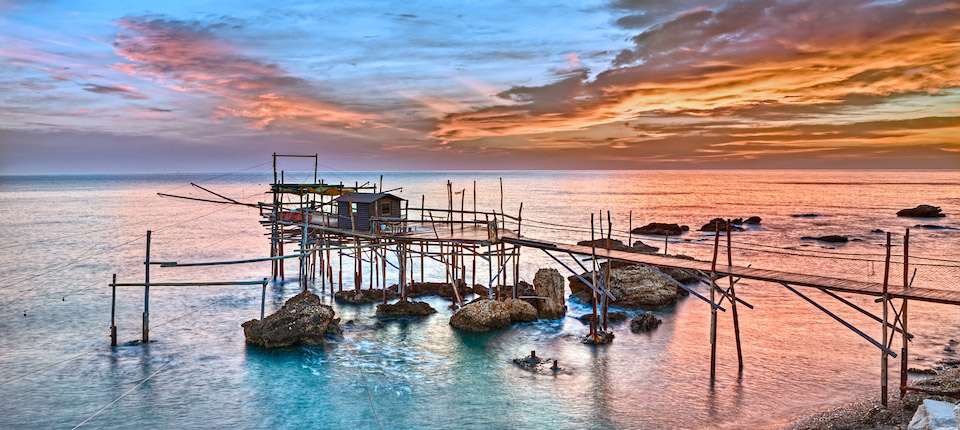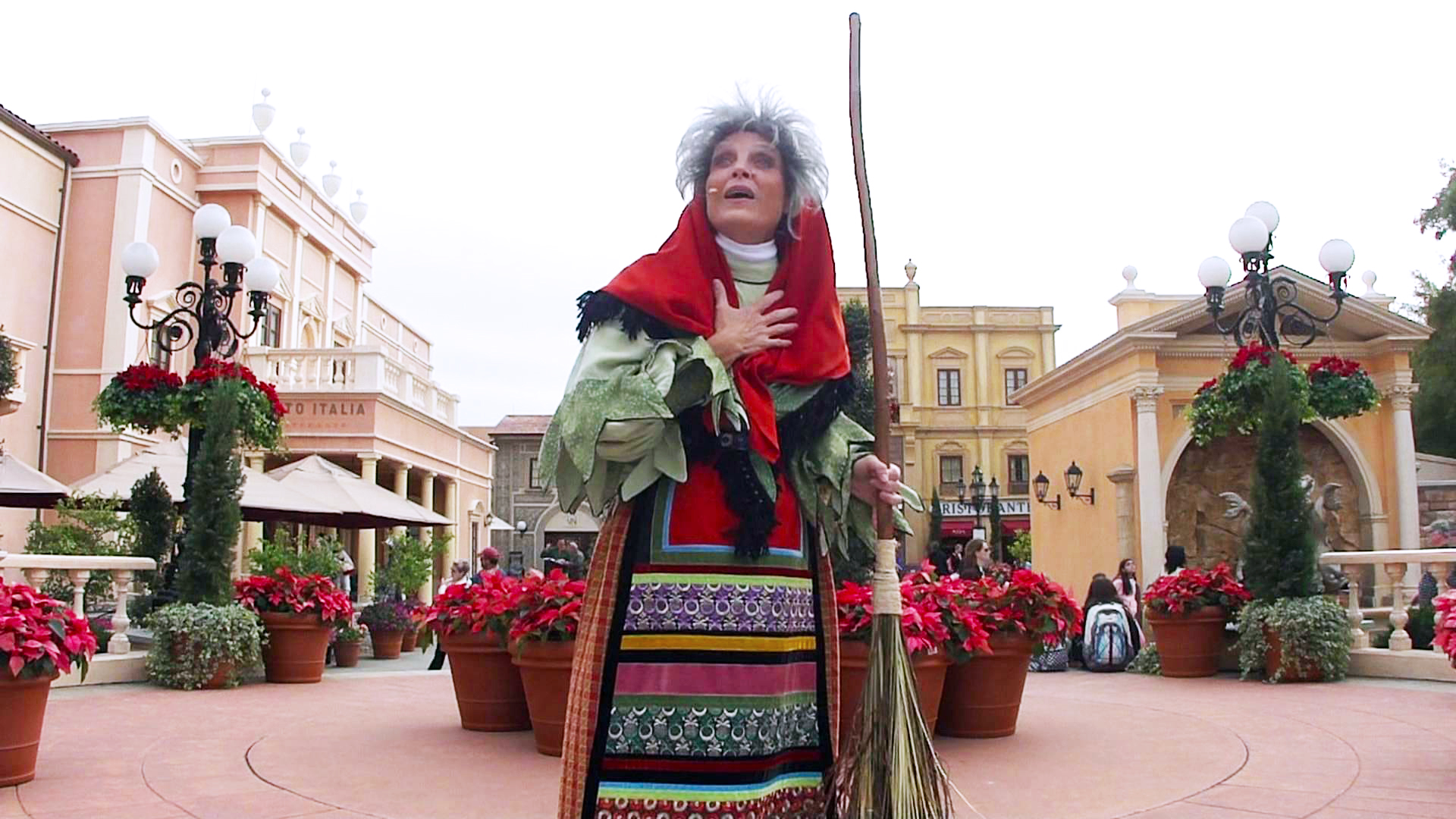We now return the provinces of Italy after spending some time with the travelers during the 2018 Publisher’s Tour. This week we visit the province of Chieti in the region of Abruzzo.
This area was first settled by the Osci people near the Pescara River. It was conquered by the Romans in 305 BC, but after the fall of Rome in 476 AD, Theoderic the Great gained ownership of the city and it was subsequently used as a Lombard fortress. What then followed through the centuries was a series of conquests by the Franks, Normans, Angevins and Aragonese. Then a strong control over the city was gained by Charles V, who made Chieti the capital of Abruzzo Citra, under rule by the House of Bourbon.
The province of Chieti is one of four provinces in the region of Abruzzo on the eastern coast of Italy. It is the most easternmost province of Abruzzo and also includes a large part of the Majella Massif, which at a height of 9,163 feet, is the second-highest in the Apennine Mountains. To the northeast is the beautiful Adriatic Sea, with the Province of Pescara to the north, L’Aquila to the northwest and the region of Molise to the southeast. The provincial capital, the city of Chieti, is situated on a ridge a few miles inland from the sea. Situated in a pretty hilltop setting below the mountains and above the Sangro Valley, the city’s history goes back to before the Roman era. In the surrounding area, visitors can enjoy the wooded mountains, rolling hills and cove-marked coastline. Remains of the Roman Empire have left a significant mark on the city which can still be seen in the city gate, as well as the remains of the Templi Romani, the theater and bath complex, complete with beautiful mosaics, which are all located right in the heart of the city. The historic town center is adorned with arcades, palazzo-lined streets, spacious piazzas and plenty of cafes and shops.
In a country teeming with religious festivals, it is quite a feat to be named the oldest in all of Italy. What is even more impressive is to also be named the most emotional procession at the holiest and most solemn time of the year. The only event that can lay claim to all of these titles is La Processione del Venerdì Santo, a Good Friday procession that takes place in Chieti. Rather than describe the ceremony, we will revisit the festival during our Holy Week edition.
One of the city’s main attractions is its cathedral, dedicated to an early bishop of Chieti, San Giustino. The Gothic-style church has three naves, a barrel vault and a soaring dome. The column-studded crypt is decorated in the Baroque style and there is a 16th century bell tower that is one of the city’s landmarks. The National Archeology Museum is housed in a neoclassical villa and holds the famous Guerriero di Capestrano, an Italic (pre-Roman) sculpture, along with other artifacts, sculptures and a large collection of coins from the 4th century BC through the 19th century. The Museo d’Arte is housed inside the noble Palazzo Martinelli-Bianchi and has a vast art collection from the 14th through the 18th centuries.
One of the more colorful festas in Chieti is the Infiorata, when the streets are carpeted in decoratively arranged flower petals depicting sacred images in honor of Corpus Domini (June 13th). It extends along the Corso Marruccino at Palazzo delle Poste and extends to Piazza Valignani. From there, a green carpet edged in flowers leads to Piazza San Giustino and the Cathedral.
A few miles southeast of Chieti is the town of Lanciano and the Cathedral of Santa Maria del Ponte (St. Mary of the Bridge). The unique characteristic of this church, reflected in its name, lies in the fact that it is built on top of three arches of a Roman bridge erected by Emperor Diocletian. It was initially called Oratorio di Maria Santissima del Ponte (Oratory of the Most Holy Mary of the Bridge) and then Santa Maria delle Grazie (Saint Mary of the Graces). In 1088, during reconstruction work on the bridge following an earthquake, an 8th century statue of the Madonna and Child was discovered hidden in an arch of the bridge and so the church was renamed. Earthquakes have long troubled the area and often churches have needed substantial reinforcement and reconstruction. The present church dates to the 14th century. At the beginning of the 17th century the campanile was added, but the entire church was rebuilt during the 18th century. The facade of the new church was begun in 1819, but the upper part of it was never completed and remains unfinished to this day. For sightseers in Lanciano, there are a number of interesting towers. Torri Montanare, a relic of the 11th century walls, consist of two massive towers, the most recent dating to the 15th century and offers a sweeping panoramic view of the area. Also along the city walls is Torre Aragonese, which also dates to the 15th century.
Vasto is the second-largest town in the province and like Chieti, has pre-Roman origins. The city comprises two parts – the old town center and Vasto Marina, the new residential and commercial center on the sea, with a coastline that is a preferred seaside destination in the region. The first thing you will appreciate upon arriving in Vasto is the beautiful panoramic views over the golden beaches lining the Adriatic Sea, the Punta della Penna Harbor and the lighthouse.
The old town has a very charming medieval center and many beautiful buildings dating back to the 15th century. A walk through town takes visitors to the Piazza Rossetti with the impressive Caldoresco Castle, with the original parts going back to the 14th and 15th centuries. The Palazzo d’Avalos is another key sight which is now home to the Museo Civico Archaeologica and a lovely Neapolitan-style garden. Not far away is the Cattedrale di San Giuseppe which has a simple Romanesque facade. The remainder of the cathedral was rebuilt in the 16th century, but not due to an earthquake. It was destroyed during a Turkish raid. Wander through the narrow alleyways where you will encounter old churches, palazzos and various Roman excavations. On the outskirts of Vasto is the Carpineto Sinello – the Museum of the Pig, billed as the world’s first swine museum.
Further afield is Guardiagrele, with its many narrow streets, it is often described as one of Italy’s most attractive villages. But that claim may be made by many villages in Abruzzo, with the hilltop towns of Furci, Monteferrante and Roccascalegna also competing for the title. Charm and a sense of history are in abundance in the province of Chieti, with a myriad of activities, especially during the spring. Keep this in mind as you plan your next trip to Italy.





